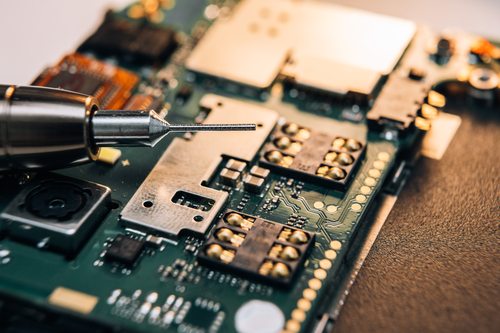 Diamonds may be a smartphone’s best friend, claims startup firm Akhan Semiconductor. Akhan hopes the properties of diamonds will make them a viable replacement for silicon in smartphone processors. Besides being the hardest substance on earth, diamonds are the best thermal conductors, running five times hotter than silicon, and they eliminate up to 90 percent of typical energy loss. This means that a diamond-based smartphone could emit significantly less heat and last longer.
Diamonds may be a smartphone’s best friend, claims startup firm Akhan Semiconductor. Akhan hopes the properties of diamonds will make them a viable replacement for silicon in smartphone processors. Besides being the hardest substance on earth, diamonds are the best thermal conductors, running five times hotter than silicon, and they eliminate up to 90 percent of typical energy loss. This means that a diamond-based smartphone could emit significantly less heat and last longer.
But before we leave the silicon age, here’s a look back at how smartphone processors got to where they are today.
The First Smartphone Processors
In 1992, IBM introduced the IBM Simon Personal Communicator, known as the Angler. Called a “personal communicator” rather than a smartphone, the Simon expanded the functionality of the traditional phone by adding mobile flexibility along with portable fax, paging and email capability. The Simon’s processor was a 16-bit, x86-compatible Vadem CPU that ran at 16 MHz. The Simon went on sale to the public in 1994, but a high price point held unit sales down to 50,000, and it went off the market in 1995.
The next year, Nokia took the next step toward popularizing smartphones with the 9000 Communicator, which is considered the direct predecessor of today’s smartphone. Building on Simon’s combination of phone, email and fax features, the Communicator added word processing, spreadsheets and internet browsing functions. The Communicator was equipped with its own operating system, GEOS, the prototype for the Symbian OS. The original Communicator used an Intel 24 MHz i386 CPU. A 1999 upgrade, the 9110, used an embedded AMD Elan SC450 486 processor that ran at 33 MHz. The next year’s upgrade, the 9210, used a 32-bit ARM9-based RISC CPU running at 52 MHz.
The Coming of the iPhone
As smartphone competition began to heat up in the early 2000s, manufacturers raced to improve their processing speed and power. Meanwhile, screens also became larger. A breakthrough came in 2007 when Apple introduced the iPhone, which had a touchscreen and an operating system modeled on Apple’s desktop OS X. The first iPhone ran on a 620 MHz Samsung ARM processor. Although it underclocked to 412 MHz, it could vary in speed up to 700 MHz. It also used an ARM Intelligent Energy Manager that reduced power consumption by 25 to 50 percent.
Shrinking SoC Processors Do More With Less
Qualcomm ushered in the next stage of processor development in 2008 by introducing System on a Chip (SoC) processors to the market with the predecessors of today’s Snapdragon series. The QSC7230 processor series shrunk smartphone machinery dramatically by fitting all the components of a traditional computer’s motherboard onto a single chip. This packed more processing power into a smaller space, allowing more room for a battery in the phone’s interior. Functions such as FM radio, Bluetooth, GPS, cameras and third-party operating systems could now all be powered by a 600 MHz processor.
Accelerating Into the Future
Striving to meet the growing demand for phones capable of delivering fast broadband service, Qualcomm continued to push the industry forward in the 2010s, introducing dual-core Snapdragon chipsets that pushed processor speed up 1.2 GHz in 2010 and 2.5 GHz in 2011. By June 2013, the Snapdragon 800 was enabling the world’s first LTE-Advanced Smartphone, the Samsung Galaxy S4, to deliver data speeds up to 150 Mbps.
In 2015, Samsung unleashed a new version of its processor, the 64-bit Exynos 7420 Octa-core, which is being used in devices such as the Galaxy S6 and S6 Edge. The Exynos 7420 is using a 14nm process to deliver 2.1 GHz clock speed.
As 2016 dawned, Samsung regained the cutting edge with the Snapdragon 820 and 821. With a Kryo quad-core CPU that reaches speeds up to 2.4 GHz, the 821 points to the way processors are heading as they race ever faster into the future.

